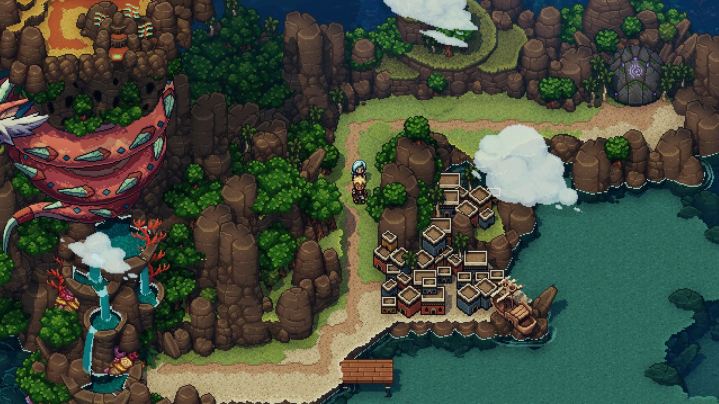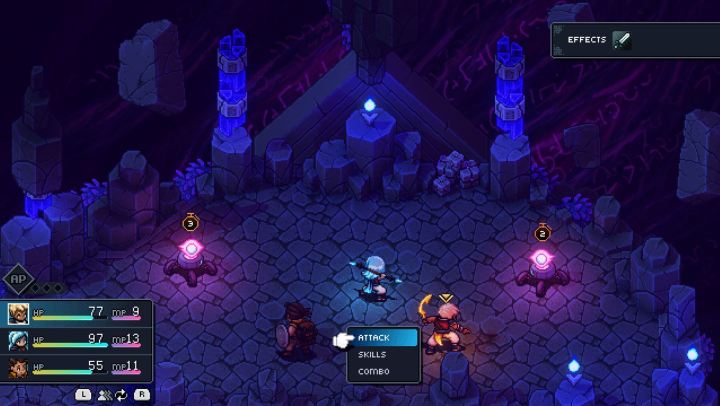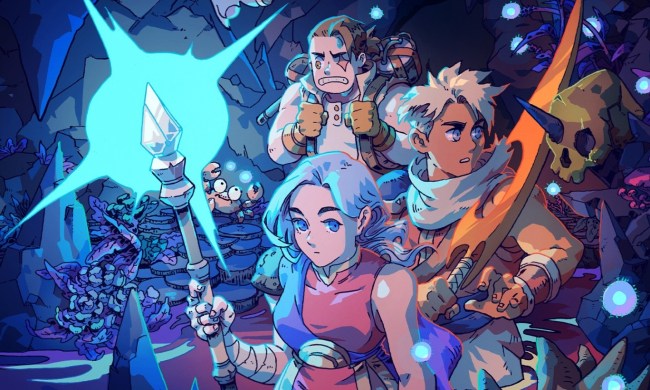The Messenger, an intricately designed 2D platformer inspired by the likes of the Ninja Gaiden sreies, is one of the best indie games of the last decade. That’s why it was surprising when developer Sabotage revealed that its next project was Sea of Stars, a radically different turn-based RPG inspired by games like Chrono Trigger.
While it might seem like a wildly different direction for Sabotage to go in, it’s actually part of a broader world that Thierry Boulanger, studio president and creative director has crafted since he was in elementary school. I got an early, hands-off look at Sea of Stars, and it’s clear that Boulanger is expanding the world he has inside his head with a game that takes all of the correct lessons from classic RPGs.

A sabotaged connection
Typically, when a development studio launches a new game in a new genre, they like to declare it a new IP completely separate from past works. Just look at what Shovel Knight developer Yacht Club Games is doing with Mina the Hollower.
Sabotage is going in the opposite direction, as Boulanger is not ready to let go of the world he became a game designer to create. Instead, Boulanger embraces the fantasy world he started crafting as a child.
“I have this fantasy world that I’ve been building since I was in elementary school, so we’re basically telling story arcs from that world,” Boulanger tells Digital Trends. “All these things, in some form, were already in my head when I was like eight or something. Now it’s coming together in a more concrete format, but it’s all connected.”
While Sabotage doesn’t plan to give this world an official name, Boulanger says its fans call it the “Saboverse.” Sea of Stars is set long before the events of The Messenger in the Saboverse, back when there was an archipelago and not just one island. It follows two Solstice Warriors who can control the time of day and use special Eclipse magic to defeat the Dweller, giant monsters summoned by the evil Fleshmancer.
Even though it looks, plays, and tells its story in a distinct enough way to stand on its own as a new IP, it’s actually a prequel to The Messenger. Boulanger credits the gameplay genre shift to Sabotage wanting to find the style of game that tells the story the best.
“We’re telling this arc, and this is the genre of gameplay that tells that story,” he said. “Sea of Stars is about a group dealing with higher stakes and traveling, whereas The Messenger made sense as a single-player game because it was about one character. If you play our games, you’ll get the additional ‘Oh, I get that reference’ or ‘Oh, I understand that thing I was curious about better now.’”

In turn, the formula established by games like Chrono Trigger was what Sabotage turned to as it continues to build a connected universe, something not very common in the game industry.
“It’s very interesting for me and the rest of the team to build this overarching thing that is consistent, even though we explore different genres with every production,” he concludes.
Triggered
Sea of Stars’ inspirations are very clear as soon as one lays eyes on the game. It features gorgeous pixel art reminiscent of classic SNES and Game Boy Advance RPG titles, but with modern flair thanks to the lighting and colors used. There are no random encounters, with players instead running into enemies they see to initiate a battle.
These battles are turn-based affairs where players use various attacks and spells against their opponents. More powerful attacks from enemies can pose a significant threat, but players can depower or outright cancel these strong attacks by using a string of ability types.
The demo I saw followed the Solstice Warriors as they explored an abandoned wizard lab to find a ring for a pirate captain. There’s an overworld, as well as towns and dungeons, for players to explore. Players can interact with these environments in various ways, whether it be through fishing to find ingredients to cook at a campfire or placing crystals to open portals that allow them to explore the lab.
Sea of Stars might not shock players with innovative gameplay, but it’s intentionally simple. Boulanger believes that simplicity is what makes the RPGs that inspired this game so great.
“Full disclosure, Chrono Trigger is why I do this for a living,” he explained. “Chrono Trigger had no grinding — you just stick to the story, and the next beat is always around the corner. The dungeons are always short, and you do not feel like there are these filler in-between areas. The total playtime comes from how many times you’ll replay because it’s so tight. It’s light, but it never feels like a chore.”

Another game he compliments is Super Mario RPG, which Sea of Stars borrows its timed action command system from. “Super Mario RPG dared to be super-short, but it’s so dense that you can just replay it endlessly,” he says.
These same tenets serve as the backbone of Sea of Stars, which is why the game looks so approachable and enjoyable. Sea of Stars might not be the most revolutionary game, but like The Messenger, it seems like it will be a pure refinement of a classic formula that so many players enjoy. And the fact that Sea of Stars is part of an expanded universe that Boulanger has crafted since he was a child demonstrates just how much care is going into this game.
Sea of Stars is supposed to release for PC and Switch sometime this winter, though Boulanger jokingly said “that’s why we don’t have a release date yet” when showing some little details like how fish react to the player swimming in water.



